After patients undergo a series of cortisone injections it is best to wait at least six weeks before surgical intervention. The insoluble steroids cause a delay in the healing of surgical wounds. In extreme cases, injected steroid can leech through the skin and ulcerate even in non-surgical patients. This type of extreme effect can also be seen when tophaceous gout extrudes urate crystals.
For practical purposes, in pre-surgical decision making, when conservative measures have been exhausted, it is prudent to use deliberate caution in the face of recent injections. It is important to make sure the injected steroid has metabolized.
Gout Crystal Picture from NIH |
|
Gouty Tophus with Extrusion |
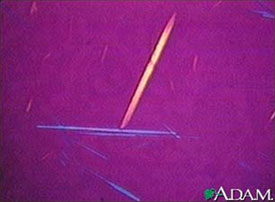 |
|
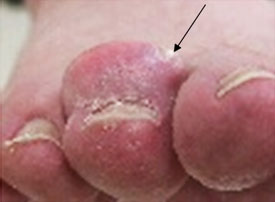 |
It is also important to remember that synthetic corticosteroids temporarily suppress the immune system, particularly in the later stages of wound healing. As a result, the proliferation of dermal collagen is stalled.
The cortisone crystals seen below were retrieved from a biopsy of a patient with Morton’s neuroma. The patient neglected to report repeated injections given by another physician prior to surgery. As a result, the wound dehisced and ultimately took three months to heal completely.
Insoluble Dexamthasone Acetate Crystals |
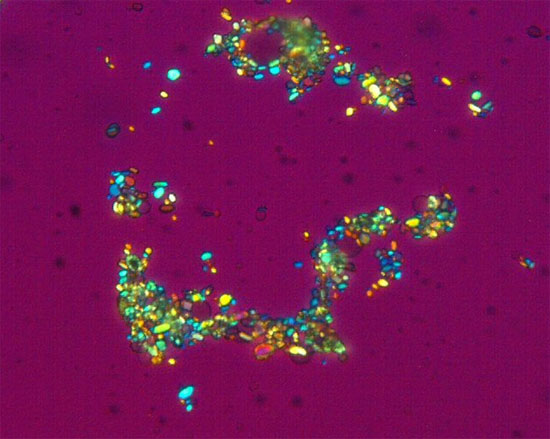 |
|
Injected Cocaine
In this next case, a twenty-four year old female was admitted to our hospital with abscess/cellulitis of the dorsum of the right foot. The presumed etiology was an insect bite.
After the foot was drained, the patient developed a resilient full thickness ulceration. A split thickness skin graft was needed to close the wound.
Donor Site |
|
Harvesting Graft |
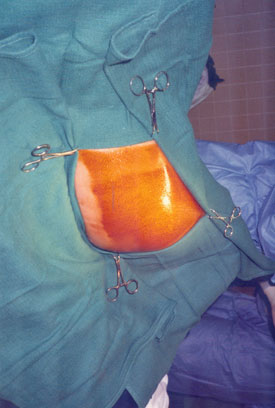 |
|
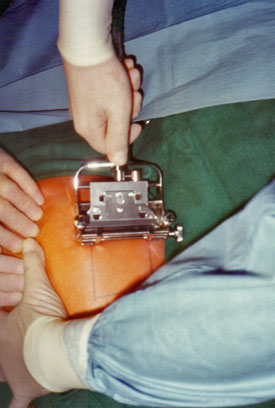 |
One Week Post Op |
|
Three Week Post Op |
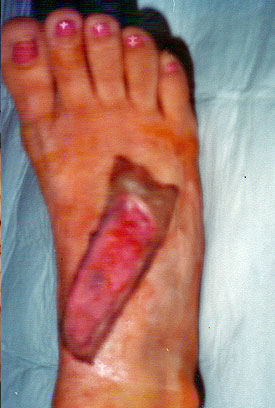 |
|
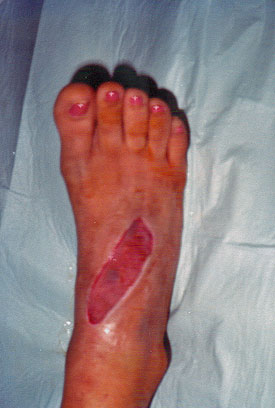 |
Later in the course of treatment, we learned that this patient was using the vein in the dorsal aspect of the foot to inject cocaine. Although this is not a common site for IV drug abusers, some individuals feel that they can conceal drug use by using this site. However, scarring of the peripheral veins (particularly the antecubital vein) known as track marks, are evident in this site as well. Additionally, repeated use of the same syringe will blunt the needle and further traumatize the site of the injection. Usually there is a darkening of the veins due to scarring and a build up of toxins.
Cocaine Crystal |
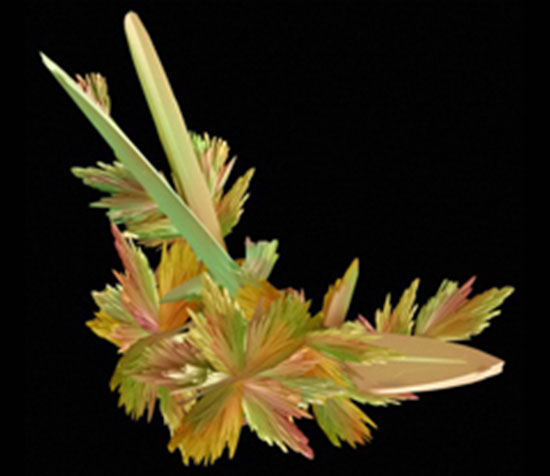 |
|
The local anesthetic and vasoconstrictive properties of cocaine also contribute to the degradation of tissue with repeated use. Cocaine mediated ischemia is common and arterial pseudo aneurysms may form at injection sites. The pseudo aneurysms have a tendency to rupture potentially causing hemorrhage, distal ischemia, and gangrene.
Get a steady stream of all the NEW PRESENT Podiatry
eLearning by becoming our Facebook Fan.
Effective eLearning and a Colleague Network await you. |
 |
This ezine was made possible through the support of our sponsors: |
|